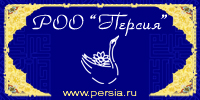
Publications from the Republic of Kazakhstan, collectively called "Voices of Semirech'e (Seven Rivers)" comprise a considerable part of this issue.
In the "Impressions" section, Vladimir Vyatkin's photo essay is devoted to the city of Almaty, Kazakhstan's largest academic and cultural centre.
Giving an interview to our magazine, Murat Auezov, Director General, the National Library of the Republic of Kazakhstan, stressed that the mission of a national library today is to combine traditional library functions with cultural activities.
Following the same subject, Natalya Barsukova relates the history and present day condition of this cultural centre.
The Library is proud of its collection of rare books and manuscripts, in particular the manuscript Qurans and other manuscript books. The collection is presented by its keepers, Nabat Askarbekova and Rauza Seidakhmetova. They think that it is high time to compile a Global catalogue of Oriental manuscripts.
Vil' Galievreviews the works by Russian artists inspired by Kazakhstan and published in the Pictorial Russia collection (1885-1886).
An interview given by Meruert Abuseitova, Director of the Kazakhstan's Institute of Oriental Studies, is entitled To Know Our Neighbours Is To Know Ourselves. Staff members of the Institute concentrate their research on studying relations of the Kazakhs with neighbouring countries in various periods of time. In the Muzee Guimet in Paris, M. Abuseitova found a painting by Giuseppe Castiglioni, entitled The Kazakhs Present Horses, which testifies to the fact of close contacts between Kazakh Khans and Chinese Emperors in the 18th century.
Nagima Sagandykova writes about the heritage of Khoja Ahmed Yassavi, a prominent 12th-century Sufi, and presents Russian translations of several Yassavi's khikmets (didactic poems).
An article by Risalat Karimova is devoted to Uighur historical monuments in the neighbouring China. Recently researchers from Kazakhstan had a chance to examine these monuments.
Islam came relatively late to the Kazakh lands, but this new religion did not fully substitute for the former religious beliefs of the Kazakhs, which remained to exist, though under Islamic cover. This is the subject of an article by Raushan Mustafina.
One of the most interesting 12th-century works, the Collection of Tales and Brilliant Stories by Sadid Muhammad al-'Aufi, reflects cultural and historical ties of the Kazakhs with the peoples of Middle East, Central and South Asia. Timur Beisembiev studies this author's writings and makes felicitous translations of some tales into Russian, which can be seen from the accompanying publication.
For a Kazakh, the world of things, especially in former times, had not only material and aesthetic value, but sometimes sacral meaning as well. Shaizada Tokhabaeva illustrates this by numerous facts related to the work of smiths and jewelers. She writes that the awakening of the artisan's "gift from above" has similar symptoms as the "birth" of a shaman.
Russian seafarer Aleksey Butakov is known as the man who first explored Aral Sea in the 19th century. Less known are his friendly relations with the Kazakhs who lived in this region, and the fact that he studied culture and ethnography of the peoples living by the Aral Sea. The testimony of such interest is found in Butakov's letters to his relatives, which are published and commented by Aleksandr Kadyrbaev.
The "Writings" section opens with another major theme of this issue, 1600th anniversary of Armenian alphabet. Alla Ter-Sarkisyants in her article To Understand the Mind's Maxims... describes in detail the importance of this event in Armenian history. A review by Marina Krutova and Ivan Levochkin gives us a chance to enter the storage area of the Manuscript Department, Russian State Library, where a collection of Armenian manuscript books and other materials is kept. Miniatures from manuscript books are published for the first time.
"The Land of Orient" section opens with an article by Gleb Kubarev, which refers the reader to the times of Eastern Turkic Kaganate (7th-8th century). The study of Khusho-Tsaidan memorials (Mongolia), dated to that time, helped in revealing many historical mysteries.
"Trees Where Deities Live", such is the title of an article by Ekaterina Simonova-Gudzenko, who describes sacred trees and groves. Many of these descriptions are based on the author's personal observation.
The Biblical town Kharran is now an ethnographic village with the same name, located in Eastern Turkey. Zeinap Oral, Turkish journalist, tells about her visit to this unique village. Translation and commentary by Turkologist Svetlana Uturgauri.
Yuriy Sorokin introduces Liu Bannun, an author from China, and presents translation of his short stories.
Our magazine continues a series of articles about state symbols of Oriental countries. Vladimir Ganshin writes about the symbols of the People's Republic of China.
Andrey Lankov reminds us that Tsushima is not only the name of famous sea battle, but also a group of islands, which he visited recently.
Topics and motifs of Zen painting are a subject of Elizaveta Malinina's article. Painting is the first of all arts to reflect unique character of Zen outlook.
In the end of this issue our reader will find traditional "Reader" and "Orientnet" columns.
Please e-mail your wishes, suggestions and comments to the following address: orientnet@rsl.ru.
You can find the summaries of the previous issues online, by visiting our section of the Russian State Library Web-site: http://orient.rsl.ru/en/






